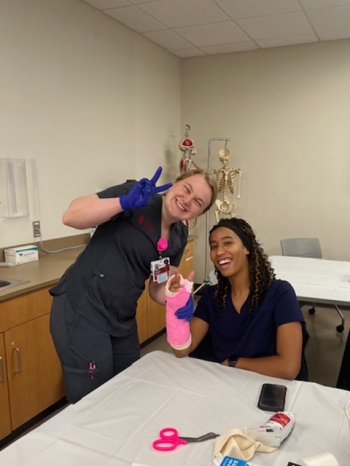The OU Pediatrics residency program is committed to helping residents accomplish their personal career goals whether this includes a general pediatrics practice or subspecialty practice following a Pediatric fellowship. Each resident will have up to 6 rotations of an individualized curriculum that will allow preparation for the type of practice the resident plans to enter following residency. These individualized rotations will allow the resident to have opportunities to explore subspecialty fields, clinical practice in an ambulatory setting or practice as an inpatient hospitalist. At the beginning of residency each resident will develop an individualized learning plan with a faculty mentor and work toward fulfilling their plan throughout their residency.
We are excited to announce that this year our program has transitioned to an X+Y (3+1) schedule. During your Y week you will have a minimum of 4 continuity sessions as well as dedicated time for scholarly activity and admin. There will also be time to spend in areas that you have interest in.
An overview of the residency program by year
First Year:
The first year in Tulsa is a fairly typical introduction to pediatric residency. First year residents spend 5 blocks on our in-patient teaching service, working with a team consisting of a board certified or board eligible pediatric hospitalist attending, a senior resident, and 1 or 2 first-year trainees. During in-patient months interns will typically have 1 block of night shift coverage along with a senior resident. Ambulatory pediatrics training consists of 1 to 2 blocks in our free-standing outpatient facility and a minimum of 4 continuity sessions during your Y week. Interns will complete 1 block in Normal Newborn Nursery, Pediatric Emergency Medicine, Developmental Pediatrics and 3 electives in a core or subspecialty areas – typically Pediatric Cardiology, Pediatric Endocrinology and Pediatric Hematology/Oncology. Each Wednesday afternoon is dedicated to didactic education through Academic Afternoon. Interns select a faculty mentor during this year.
Second Year:
Residents are designated as "senior" residents at the beginning of the second year. Rotations for this year include a block of Pediatric Intensive Care (PICU) and Neonatology Intensive Care (NICU), also a block of Adolescent Medicine, senior night shift duty and a second month of Pediatric Emergency Medicine. Two blocks as the senior supervising resident leading an in-patient teaching team and ambulatory pediatrics along with additional subspecialty rotations will complete the second year. Residents wishing to enter fellowship may apply and interview at the programs of their choice. Continuity Clinic and Academic Afternoon continues throughout residency. This is a year to develop individual interests, and to find time to study.
Third Year:
Only 12 more months to go! During this year, residents spend time as a senior supervising resident, another block of night duty in the hospital, a full block of NICU and PICU, a third block of pediatric emergency medicine and 1 block in the clinic. The remaining blocks are subspecialty electives. We also encourage a month of Child Abuse Pediatrics, our only fellowship program. This is a time to review practice management issues and finalize plans for the next step in a resident's career. During the last month of residency we celebrate with a great party, always marveling at how quickly the time flew by.
Fourth Year Chief Resident:
Typically a graduating 3rd year resident will be appointed to the 4th year Chief Resident position. The Chief is a member of our faculty team in either the hospital, clinic setting or a combination of both. The Chief is a vital member of the Residency Leadership Team working with the Program Director and Program Coordinator to create the best residency experience possible for the residents.


